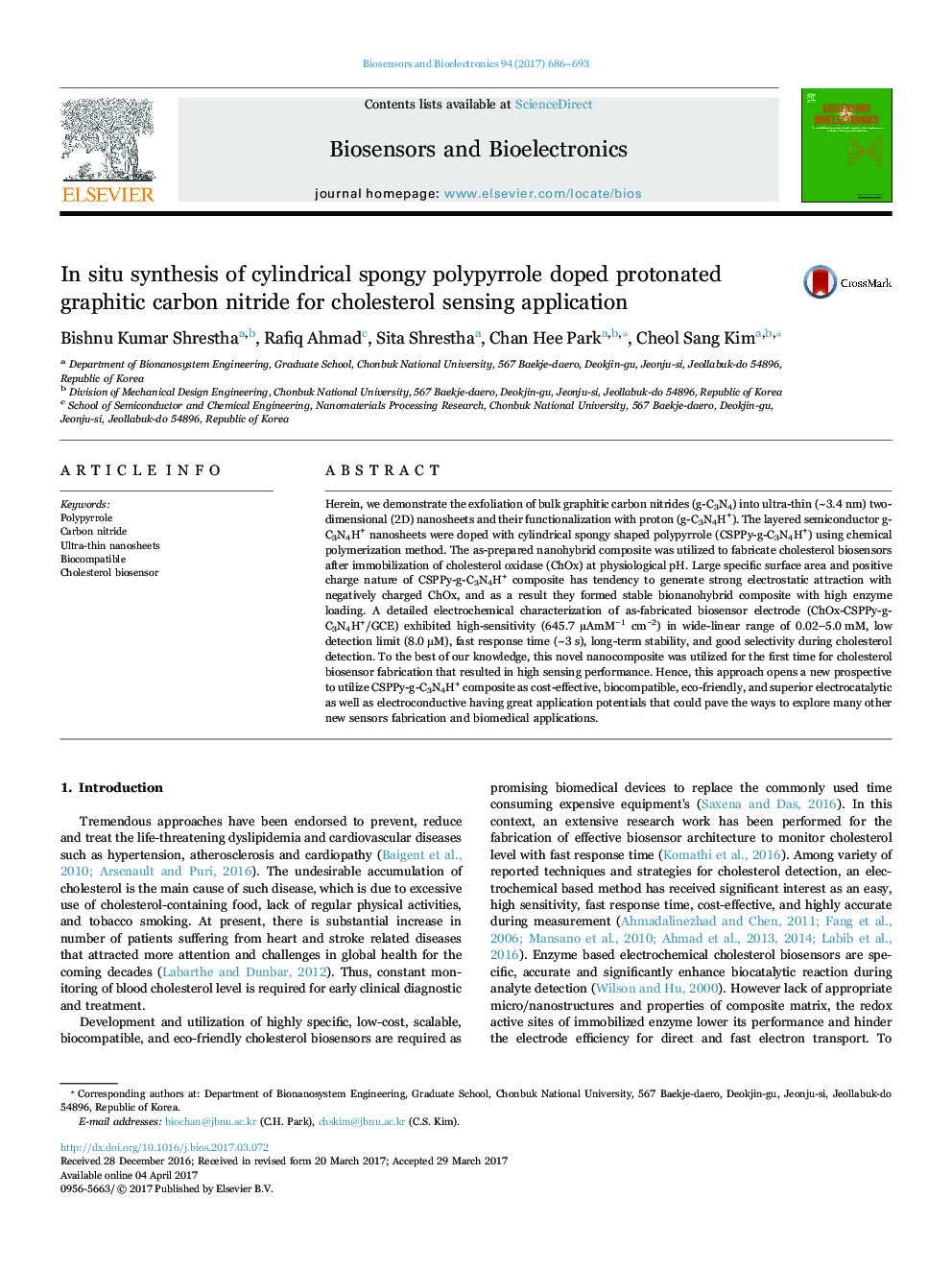| Article ID | Journal | Published Year | Pages | File Type |
|---|---|---|---|---|
| 5031102 | Biosensors and Bioelectronics | 2017 | 8 Pages |
Abstract
Herein, we demonstrate the exfoliation of bulk graphitic carbon nitrides (g-C3N4) into ultra-thin (~3.4 nm) two-dimensional (2D) nanosheets and their functionalization with proton (g-C3N4H+). The layered semiconductor g-C3N4H+ nanosheets were doped with cylindrical spongy shaped polypyrrole (CSPPy-g-C3N4H+) using chemical polymerization method. The as-prepared nanohybrid composite was utilized to fabricate cholesterol biosensors after immobilization of cholesterol oxidase (ChOx) at physiological pH. Large specific surface area and positive charge nature of CSPPy-g-C3N4H+ composite has tendency to generate strong electrostatic attraction with negatively charged ChOx, and as a result they formed stable bionanohybrid composite with high enzyme loading. A detailed electrochemical characterization of as-fabricated biosensor electrode (ChOx-CSPPy-g-C3N4H+/GCE) exhibited high-sensitivity (645.7 µAmMâ1 cmâ2) in wide-linear range of 0.02-5.0 mM, low detection limit (8.0 μM), fast response time (~3 s), long-term stability, and good selectivity during cholesterol detection. To the best of our knowledge, this novel nanocomposite was utilized for the first time for cholesterol biosensor fabrication that resulted in high sensing performance. Hence, this approach opens a new prospective to utilize CSPPy-g-C3N4H+ composite as cost-effective, biocompatible, eco-friendly, and superior electrocatalytic as well as electroconductive having great application potentials that could pave the ways to explore many other new sensors fabrication and biomedical applications.
Related Topics
Physical Sciences and Engineering
Chemistry
Analytical Chemistry
Authors
Bishnu Kumar Shrestha, Rafiq Ahmad, Sita Shrestha, Chan Hee Park, Cheol Sang Kim,
